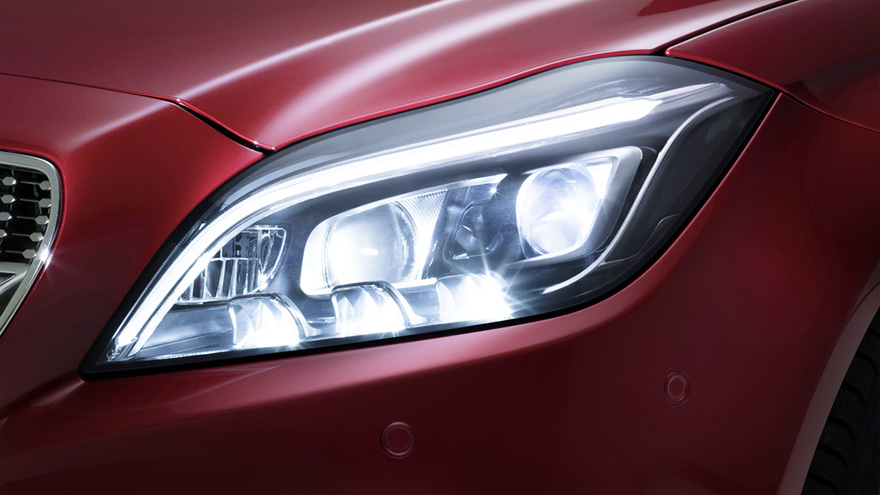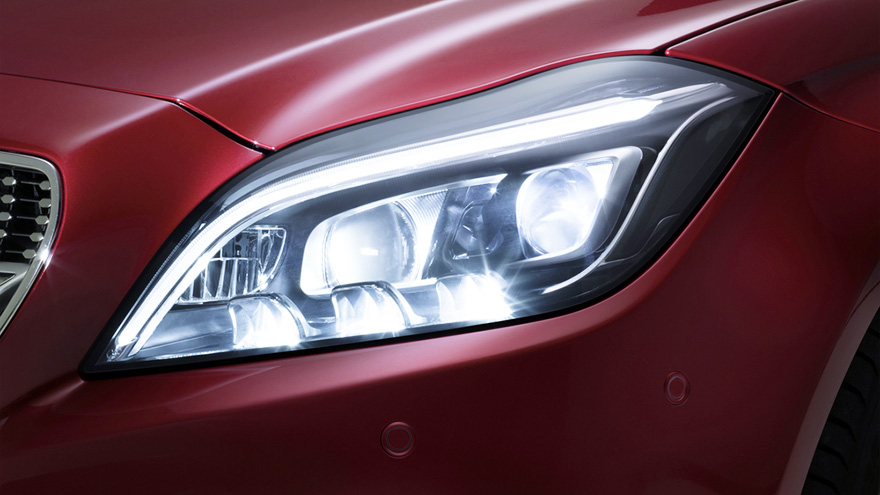While perhaps dealers might be seeing some instability at their stores, what they’re experiencing in the auction lanes appears to be the opposite based on what Black Book shared in its latest installment of the Market Insights report.
Editors found that value decreases last week for both cars and trucks both landed within 5 basis points of the four-week average.
“Overall depreciation of used vehicles is stable. While luxury cars depreciated steeply, sporty cars and pickup trucks retained strong values,” said Anil Goyal, executive vice president of operations at Black Book.
The report indicated that on a volume volume-weighted basis, overall car segment values softened by 0.43 percent last week. In comparison, the market values had decreased by 0.48 percent on average during the prior four-week period.
Among cars as Goyal referenced, the sporty car, premium sporty car and midsize car segments experienced the smallest drop, ranging from 0.05 percent to 0.26 percent.
Again looking at volume-weighted information, Black Book indicated overall truck segment values (including pickups, SUVs, and vans) dipped by 0.40 percent last week. That’s just 3 basis points away from the four-week average, which was 0.43 percent.
Within trucks, editors mentioned full-size vans, pickups and full-size crossover/SUVs posted the smallest declines with none of them topping 0.44 percent.
Moving on to what Black Book’s lane observers noticed at the 60 sales they attend each week, a variety of anecdotes surfaced. Here is the rundown from editors:
— From Florida: “Dealers here continue to voice complaints about sluggish retail sales. As for wholesale, the captive lanes did pretty well, but the dealer consigned lanes had a lot of no-sales.”
— From South Carolina: “As you might expect for this time of year, inexpensive vehicles were drawing the most attention.”
— From Illinois: “Midsize and small SUVs sold well and for good money. Trucks held their own as some ¾-ton trucks were actually up in price.”
— From Tennessee: “Both compact SUVs and small passenger cars were in demand and performed well.”
— Also from Florida: “We had more no-sales from the trucks this week. Most of the positive activity was from the rental and lease lanes.”
Preparing for the Presidents Day weekend might have been a prelude to how this year’s spring market might behave.
Black Book arrived at that assessment as part of this week’s Market Insights report that looked also at how spring is taking hold of the market with overall car retention coming in just slightly stronger than trucks.
“The depreciation rates on used vehicles improved a little last week. Bidding in auction lanes was strong ahead of Presidents Day,” Black Book executive vice president of operations Anil Goyal said in the latest report.
Volume-weighted, editors determined overall car segment values decreased by 0.37 percent last week. In comparison, Black Book pointed out that the market values for cars had softened by 0.56 percent on average during the prior four-week period.
In the car space, editors noticed the luxury car and sporty car segments experienced the biggest drops, sliding by 0.64 percent and 0.61 percent, respectively.
Moving on to trucks, Black Book determined that values for the overall segment (including pickups, SUVs and vans) on a volume-weighted basis dipped by 0.38 percent last week. During the previous four-month span, that decrease averaged 0.48 percent.
Among trucks, editors mentioned compact luxury crossover/SUVs experienced the biggest drop, declining by 0.95 percent or $170.
Turning next to what Black Book’s representatives noticed in the lanes when attending about 60 sales nationwide each week, observers noticed typical situations dealers face in February. Here is the rundown:
—From South Carolina: “The auction was packed with dealers, and prices were stable. Bidding was active, and most of the no-sales were due to unrealistic floors.”
—From Indiana: “Consignment was low, and nice vehicles are scarce, which made for a typical February sale which involves sporadic sales in the lanes.”
—From Florida: “Dealers are looking for vehicles with low miles and a clean history report. They say that retail is slow but improving.”
—From Massachusetts: “SUVs in the $10,000 to $20,000 range attracted the most attention and bids. The consignors said that the market improved slightly from last week, which is positive news.”
iSeeCars.com recently released a study showing which vehicles were more economical to buy new over used. The Honda HR-V crossover vehicle took the top spot in that list.
But iSeeCars.com has now released study which explores the other side of the coin: Which vehicles are best to buy used over new? The new study shows that the Ford Expedition leads in the used-over-new category.
The automotive research firm and car search engine company notes that buyers will pay 23.2 percent less on an average one-year-old used car than on its new version. But buyers can see more substantial savings on some models. Price differences can be as high as 38.5 percent, or $24,690, between their new and lightly used versions.
Phong Ly, iSeeCars.com chief executive officer, said in a news release that purchasing a new car can provide the buyer with peace of mind. But if the buyer waits a year and purchases a lightly used version of the same vehicle, that can mean big savings.
“Consumers who buy a lightly used car can still take advantage of the remaining manufacturer warranties and can have the car inspected by an independent mechanic prior to purchasing to ease any uncertainties about the vehicle’s condition and driving history,” Ly said in a news release.
A mix of vehicles, including six cars, three SUVs and one minivan, are among the list of vehicles that show the greatest change in price between their gently used and new versions.
The Ford Expedition full-size SUV leads the used-over new pack with a 38.5 percent, or $24,690 price difference between its new and gently used version.
“The Ford Expedition has the highest starting price in its class, even costing more than some of its comparable luxury versions,” Ly said. “In order for it to appeal to used-car buyers, its price has to come down significantly.”
The Kia Sedona minivan ranks second with a 37.8-percent difference between its new and lightly used versions.
“The Kia Sedona ranks below its competitors in terms of family-friendly features such as cargo space, entertainment and safety technology, so it may be less desirable on the used car market,” Ly said.
Infiniti made a good showing, with QX80 full size SUV ranking fourth and the Q50 compact car placing sixth.
“The QX80’s high average starting price of $75,000 coupled with being one of the lower-rated vehicles in its class contributes to its large price reduction,” Ly said. “Similarly, the Q50 does not stack up against its competition in the luxury small sedan class, lowering its demand in the used-car marketplace.”
Demand for passenger cars is decreasing, Ly said, noting the recent discontinuation of many sedans such as the Impala and the Fusion Hybrid. He noted that five non-luxury passenger cars make the best-to-buy-used-over-new list. They include the Chevrolet Impala at No. 3, the fifth-ranked Ford Fusion Hybrid, the Nissan Altima at No. 7, the ninth-ranked Kia Optima, and the Hyundai Accent at No. 10.
The eighth-ranked Hyundai Santa Fe Sport midsize SUV, which is the five-seater version of the seven-seat Santa Fe, also made the list. Ly noted that the Santa Fe Sport is not faring well against competition in its vehicle class, and that has led to a major reduction in its starting price that is already on the low side for that segment.
iSeeCars.com compared the prices of more than 7 million new and lightly used cars sold from August 2018 to January 2019. It identified the top 10 used cars with the greatest price differences from the new versions of the same vehicle.
“While purchasing a new car offers peace of mind, waiting a year and purchasing the same vehicle lightly used can amount to significant savings,” said Phong Ly, iSeeCars.com CEO. “Consumers who buy a lightly used car can still take advantage of the remaining manufacturer warranties and can have the car inspected by an independent mechanic prior to purchasing to ease any uncertainties about the vehicle’s condition and driving history.”
Here is a rundown of the list by vehicle category.
SUVs
iSeeCars determine the top 10 SUVs with the largest price differences between their new and slightly used models.
Seven SUVs in varied sizes—three compact, two midsize and two full-size—join the three SUVs on the overall list.
The fourth-ranked Kia Sportage, the sixth-ranked Nissan Rogue and the tenth-ranked Mitsubishi Outlander are the three compact SUVs. Ly said the Kia Sportage is near the head of its class in ratings, but it trails its rivals for cargo space and handling.
Because the Nissan Rogue and Mitsubishi Outlander are on the lower end of rankings in this competitive segment, that explains why the used versions are priced to sell, Ly said.
The Nissan Pathfinder at No. 8 and the ninth-ranked Kia Sorento are the mid-sized SUVs on the list.
“Like the Nissan Rogue, the Pathfinder is on the lower end of rankings for its class,” said Ly. “Similarly, the Kia Sorento has the same cargo space issues as the Sportage, making it a less-than-ideal option for a family vehicle that requires significant cargo space.”
The full-size Nissan Armada at No. 5 and the GMC Yukon XL at No. 7 round out the SUV list.
“The Nissan Armada is the non-luxury version of the second-ranked Infiniti QX80 and achieves rankings on the lower end of its class,” Ly said. “The GMC Yukon also achieves low rankings, resulting in both having significant cost reductions off the expensive starting prices characteristic of full-size SUVs.”
Pickup trucks
In an analysis of the price differences between new and one-year-old light-duty pickup trucks, the three pickup trucks with the biggest price difference are the Ram Pickup 1500 at No. 1, followed by the GMC Sierra 1500 and the Nissan Titan.
“These three pickups are all full-size,” Ly said. “Just like full-size SUVs, they require a larger reduction from their higher starting price to attract used car buyers.”
Luxury cars
The study examined the top 10 luxury vehicles with the largest price differences between their new and slightly used models when compared to the 16.6 percent average for the luxury segment.
“Luxury vehicles are often leased due to their high starting prices, so dealers have to significantly reduce the prices to attract used car buyers,” said Ly.
Additional SUVs not appearing on the overall or SUV lists include the Audi Q5 compact at No. 7 and the 10th-ranked Cadillac XT5 midsize.
“The Audi Q5 is among the priciest vehicles in its class, which could contribute to its steep reduction,” Ly said. “Conversely, the Cadillac XT5 has one of the lowest base prices in its class, but does not stand out among other vehicles in its competitive class.”
The third-ranked Audi A4 compact car, the BMW 4 Series compact car, the eighth-ranked Mercedes-Benz C-Class compact car, and the Mercedes-Benz E-Class midsize car were additional cars making the list.
“The high starting price of these vehicles coupled with the lower demand for passenger cars in favor of SUVs leads to significant price decreases,” said Ly.
Hybrid & Electric
Determining the hybrid and electric vehicles with the largest price differences between their new and used models, iSeeCars noted that five vehicles have a price difference larger than the overall 28.1 percentage for the segment.
The eco-friendly vehicle with the greatest price decrease after a year is the Nissan LEAF, the only fully electric car on the list, which has a 40-percent cost difference between its new and lightly used models,” Ly said. “Although the LEAF is the among the more popular electric vehicles in the country, EV adoption is not widespread, so there is not a high demand for used versions of these vehicles."
Two Ford Fusions on the list include the Ford Fusion Hybrid at No. 2 and the fourth-ranked Ford Fusion Energi plug-in hybrid.
“Both these cars were recently discontinued, which shows that they are not in high demand,” said Ly.
The Kia Optima Plug-In Hybrid comes in at No. 3, and its non-plug-in variant, the Kia Optima Hybrid, ranks fifth.
“The Kia Optima hybrids lag behind other hybrids in terms of fuel economy, which coupled with the low demand for midsize sedans likely contributes to their steep price drop,” noted Ly.
Sports cars
iSeeCars examined the list to determine the sports cars with the biggest price differences between new and lightly used models.
The sports car with the largest price difference between new and lightly used as a percentage of its total cost is the FIAT 124 Spider. That car has a 25.5 percent cost reduction, or $7,678 off its average starting price of $30,062.
“FIATs are generally less popular than other brands, so it's no surprise that it's on the top of this list,” Ly said.
Best Cars to Buy Used by City
iSeeCars also looked at the top 100 metropolitan areas and found the top 20 cities with the largest price differences between new and lightly used vehicles.
The company also determined the best car to buy used in the top 20 largest cities by finding the lightly used models with the highest price difference compared to their new version.
The Hyundai Santa Fe Sport is the model with the largest relative price difference across the most cities, four.
“While buying used always amounts to cost savings when compared with the new price, some used models only offer minimal savings that are often offset by warranties and other incentives,” said Ly. “It’s important to understand that it is a good financial decision to purchase some models new, while there are some that should be purchased used.”
More details on the study can be found here.
Residual values for used cars rose by an average of 3 percent in 2018. The growth in value represents a remarkable turn of events from 2017 when there was significant pessimism about the state of the used-car market. The negative sentiment a year ago was driven by concerns that a glut of used vehicles coming back to the market would cause serious price erosion.
In fact, we saw the opposite take place in 2018 — especially for used compact and midsize cars, which saw prices surge by a whopping 8 percent — demonstrating that there is still strong consumer demand for affordable small and mid-sized cars despite OEM’s focus on bringing SUVs and CUVs to market.
Outlook for 2019
The J.D. Power analysis of the current residual values landscape indicates that used vehicles are filling several important gaps in the overall auto market across the United States.
That is why we are projecting the used market in 2019 to largely mirror what we observed last year, with a few big exceptions.
- We expect to see production cuts in the traditional passenger car segments, which will put upward pressure on prices for new cars in this category, which, in turn, will have an impact on used-vehicle valuations.
- On the other side of the equation, we are keeping an eye on the interest rate situation. Significant interest rate increases could reduce demand for used vehicles in 2019.
- Growth in used-vehicle supply is expected to continue, which will put downward pressure on residual values (a trend we are already starting to see as more used trucks and SUVs re-enter the market).
Overall, we believe the 2019 used-car market will provide a healthy environment for consumers.
In fact, we believe that the used market is going to play a huge role in the industry, as dealer groups place a stronger emphasis on leveraging this aspect of their operations to shore up bottom lines. Dealers, for instance, are making structural changes in the way they sell used cars by:
- Investing in online channels to expand their used car footprint;
- Placing greater emphasis on their certified pre-owned (CPO) offerings; and
- Improving their management of used-vehicle supply channels so that they can fully understand how demand for specific vehicles within their regions — and across the nation — are manifesting themselves.
Integrating data sources to better understand residual valuations
To help the industry manage these evolving dynamics in 2019, J.D. Power has a range of products and services that provide insight into used car residual values, as outlined below:
— We have built a database that identifies option content at the vehicle identification number (VIN) level. We are adding precision to help dealers optimize inventory management.
— We are partnering with a vehicle history company to identify the background of a specific VIN.
— We have developed tools that can access vehicle content data down to the model level to provide a granular insight into how actual supply will impact short- and long-term pricing trends.
The J.D. Power valuation team is integrating these and other features into a set of digital tools that can be accessed by our auto dealer and lender clients via our B2B website, and can be integrated into our clients’ internal analytical tools via newly designed application program interfaces (APIs). Our objective is to help clients make better decisions on inventory management and other key aspects of their business. To learn more about J.D. Power Valuation Services, visit: http://www.nada.com/b2b
Jonathan Banks is vice president and general manager, vehicle valuations at J.D. Power.
Auto Remarketing caught up with Jonathan at the recent NADA Show 2019 to talk about this column, his thoughts on why the used-car market is so healthy and much more. That discussion can be found in the podcast below.
KAR Auction Services chief economist Tom Kontos applauded the strategy used by commercial consignors after reviewing January wholesale price information.
According to ADESA Analytical Services’ monthly analysis of wholesale used vehicle prices by vehicle model class, wholesale used-vehicle prices in January averaged $10,761, representing a 1.3 percent rise compared to December but a 2.0-percent dip relative to January of last year.
Kontos pointed out that prices for all segments other than compact SUV/CUVs and compact pickups softened on a year-over-year basis.
Average wholesale prices in January fell on a year-over-year basis for the third month in a row, though they were up seasonally,” Kontos said in his latest installment of the Kontos Kommentary distributed late on Thursday.
“Auction prices for off-lease units were again a major bright spot, as upstream remarketing continues to be effective in distributing supply across multiple channels,” he continued.
According to ADESA data for January, prices for fleet/lease consignors rose 1.9 percent sequentially and 3.9 percent annually.
Along with elaborating about the wholesale scene in this online video, Kontos also shared his monthly look at vehicles that often become certified pre-owned inventory — 3-year-old midsize cars and SUV/CUVs with less than 45,000 miles.
When holding constant for sale type, model-year age, mileage, and model class segment — using criteria that characterize off-lease units — Kontos stated prices were up significantly on a year-over-year basis.
For midsize cars, prices jumped 3.5 percent or $401 to $11,867 while prices for midsize SUV/CUVs rose $107 or 0.5 percent to $20,308. Kontos added incoming supply has been skewed toward trucks which kept prices for those fleet/leases units for climbing more.
And with many portions of the country encountering frigid temperatures during the opening month of the year, Kontos said, “Retail sales were affected by severe weather conditions,” while noting that January CPO sales dropped 10.9 percent from the prior month and 1.8 percent year-over-year, according to figures from Autodata Corp.
Rounding out the latest monthly update, Kontos indicated that average wholesale prices for used vehicles remarketed by manufacturers in January slid 2.6 percent month-over-month and 2.9 percent year-over-year.
And the ADESA information for January revealed average prices for dealer consignors dipped 1.6 percent versus December and 2.1 percent relative to January of last year.
ADESA Wholesale Used-Vehicle Price Trends
| |
Average |
Price |
($/Unit) |
Latest |
Month Versus |
| |
January 2019 |
December 2018 |
January 2018 |
Prior Month |
Prior Year |
| |
|
|
|
|
|
| Total All Vehicles |
$10,761 |
$10,620 |
$10,980 |
1.3% |
-2.0% |
| |
|
|
|
|
|
| Total Cars |
$8,374 |
$8,337 |
$8,751 |
0.4% |
-4.3% |
| Compact Car |
$6,495 |
$6,398 |
$6,698 |
1.5% |
-3.0% |
| Midsize Car |
$7,394 |
$7,252 |
$7,880 |
2.0% |
-6.2% |
| Full-size Car |
$7,729 |
$8,071 |
$7,853 |
-4.2% |
-1.6% |
| Luxury Car |
$12,771 |
$12,786 |
$13,170 |
-0.1% |
-3.0% |
| Sporty Car |
$13,044 |
$13,034 |
$13,987 |
0.1% |
-6.7% |
| |
|
|
|
|
|
| Total Trucks |
$12,793 |
$12,595 |
$13,074 |
1.6% |
-2.2% |
| Minivan |
$8,496 |
$8,306 |
$9,048 |
2.3% |
-6.1% |
| Full-size Van |
$12,585 |
$11,122 |
$12,980 |
13.2% |
-3.0% |
| Compact SUV/CUV |
$10,962 |
$10,991 |
$10,680 |
-0.3% |
2.6% |
| Midsize SUV/CUV |
$11,192 |
$10,980 |
$11,578 |
1.9% |
-3.3% |
| Full-size SUV/CUV |
$13,957 |
$13,306 |
$14,648 |
4.9% |
-4.7% |
| Luxury SUV/CUV |
$17,613 |
$17,686 |
$18,446 |
0.4% |
-4.5% |
| Compact Pickup |
$9,734 |
$9,464 |
$9,306 |
2.9% |
4.6% |
| Full-size Pickup |
$15,552 |
$15,351 |
$16,190 |
1.3% |
-3.9% |
Source: ADESA Analytical Services.
Through the end of February, Audi is offering buyers all of its certified pre-owned models from 2013 to 2017 at 1.99-percent interest for up to 24 months.
That is one of what Autotrader describes as the best CPO deals to help shoppers find and purchase a pre-owned vehicle this month.
Autotrader notes that car buyers at this time of year can find a good deal on a vehicle. Dealerships should have a strong selection in February on certified pre-owned vehicles because of year-end trade-ins and vehicles coming off-lease.
“Certified pre-owned vehicles should be high on every shopper’s list, since they come backed with warranties and still have years of useful life left, offering a like-new vehicle at a lower price,” Brian Moody, executive editor for Autotrader, said in a news release.
Following are some of the best CPO deals in February, according to Autotrader editors:
BMW’s certified pre-owned program: The automaker’s certified pre-owned warranty is more appealing than usual because of an incentive from BMW, according to Autotrader. Through the end of February, qualified shoppers can get 1.99-percent interest for up to 24 months on a certified, pre-owned 2015 or 2016 model. That is a good deal for a used car, even if the term is shorter than usual, Autotrader said.
The program covers vehicles for one year with no mileage limit beyond the original factory warranty, and drivers who want to add additional coverage can do so for an extra fee, according to Autotrader.
Buick’s certified pre-owned program: The program offers six years or 100,000 miles of powertrain coverage, along with an additional year of bumper-to-bumper coverage from the expiration of the original warranty, according to Autotrader. Buick is currently offering 1.9 percent interest for up to 36 months to qualified shoppers for a certified pre-owned Encore or Enclave luxury crossover.
Autotrader scores Cadillac’s certified pre-owned program as having some of the best coverage in the luxury car space, with six years or 100,000 miles of comprehensive coverage from the original sale date. The compact ATS, the Escalade SUV and the SRX crossover are available with 2.9-percent interest for up to 36 months to qualified buyers. That is a good rate and a desirable term length, especially taking Cadillac’s available warranty into account, Autotrader said.
For Chevrolet’s pre-owned program, see Buick. Like its fellow General Motors brand, Chevrolet offers the same six years or 100,000 miles of powertrain coverage from the original sale date, along with an extra year of bumper-to-bumper coverage. Chevrolet is also offering 1.9 percent interest for up to 36 months to qualified shoppers on its Bolt electric hatchback, the Cruze compact, the Equinox and Traverse crossovers, the Malibu midsize sedan and the Volt plug-in hybrid.
Autotrader describes Land Rover’s certified pre-owned program as offering “excellent” coverage, with seven years or 100,000 miles of comprehensive warranty coverage from the original sale date. Autotrader says that is one of the longest terms in the industry. Land Rover is also offering various interest rate incentives, including 0.9 percent interest for up to 24 months for all models. Depending on the Land Rover model and model year, qualified shoppers can also get 1.9 percent, 2.9 percent or 2.9 percent for up to 36 months.
Nissan’s CPO program regrettably doesn’t offer any additional comprehensive coverage beyond powertrain coverage for up to 6 years or 100,000 miles, according to Autotrader. However, some incentives on the Altima sedan and Rogue crossover make the program especially strong in February, Autotrader said. Qualified shoppers choosing certified pre-owned versions of either models can get 3.9 percent interest for up to 60 months through the end of the month, which Autotrader describes as a good rate over such a long term for a used vehicle.
Toyota is offering powertrain coverage for up to six years or 100,000 miles as part of its certified pre-owned program, plus up to a year of comprehensive coverage. In February, a special interest rate is available to qualified buyers who decide on a CPO Camry or Camry Hybrid, with Toyota offering 3.9-percent interest for up to 36 months.
And now, back to Audi: In addition to the special incentive discussed earlier, Audi’s certified pre-owned program offers one year of additional comprehensive warranty coverage beyond the original factory warranty and if they wish, drivers can pay more to add extra coverage.
Perhaps winter isn’t quite finished yet in the auction lanes.
This week’s Market Insights report from Black Book contained emphasis on the stabilization of retention heading into late winter as certain vehicle segments triggered noteworthy activity as dealers looked to shore up inventory for potential buyers using tax refunds toward a purchase.
“With no early signs of a spring lift in the market yet, the used-vehicle market continues to depreciate at a steady pace. Expectation of smaller tax refunds this year is likely to dampen the seasonal increase,” said Anil Goyal, executive vice president of operations at for Black Book.
The latest report showed on a volume-weighted basis, overall car segment values decreased by 0.54 percent last week. That’s a little less than the average editors spotted during the previous four weeks at 0.62 percent.
Black Book noticed the full-size car segment experienced the biggest drop, sliding by 0.90 percent or $91.
Again looking at volume-weighted information, editors found that overall truck segment values (including pickups, SUVs and vans) softened by 0.49 percent last week. The average of the previous four-week stretch was 0.55 percent.
Among trucks, Black Book determined sub-compact crossovers sustained the most significant decline, dropping by 1.78 percent or $209.
With depreciation staying on a steady course, Black Book relayed observations from the lanes that strayed away a bit from the norm. Here is the rundown from lane watchers stationed nationwide:
— From Michigan: “Full-size SUVs are still in a downward trend. We are starting to see more 2019s coming through the auction, but the 2018s don’t seem to be affected so far.”
— From Massachusetts: “Trucks are performing the best right now. The money was better today and definitely an improvement from last week.”
— From Washington: “There seemed to be more high mileage and damaged units in the sale today resulting in fewer sales. The sedans and economy vehicles were the most popular today.”
— From Georgia: “We had a normal number of buyers for the highline sale. Some accounts have lowered their floors which made for a decent sale.”
The latest wholesale market analysis from RVI Group described price trends also highlighted by Manheim and Black Book for the opening month of the year.
In the United States, analysts determined the RVI Used Vehicle Price Index (UVPI) came in at 1.014 in January compared to 1.059 in December and 1.004 in January of last year. Analysts calculated the reading represented a decrease of 4.2 percent month-over-month but an increase of 1.0 percent year-over-year.
In Canada, analysts found that the RVI UVPI was 0.976 in January compared to 0.971 in December and 0.940 in January of last year. Analysts determined the Canadian UVPI ticked up 0.5 percent month-over-month and increased 3.8 percent year-over-year.
As previously reported in Auto Remarketing, the wholesale price movement both Manheim and Black Book spotted to round out 2018 continued into their analysis of January data.
The wholesale price movement both Manheim and Black Book spotted to round out 2018 continued into their analysis of January data.
Beginning with Manheim, the company determined wholesale used-vehicle prices (on a mix-, mileage- and seasonally adjusted basis) decreased 1.62 percent month-over-month in January, representing a softening for the third month in a row. This move brought the Manheim Used Vehicle Value Index to 135.4, a 3.3-percent increase from a year ago.
“Looking at trends in weekly Manheim Market Report (MMR) prices, January saw a continued price depreciation trend similar to what we saw at the end of last year,” analysts said in a commentary that accompanied the latest information.
They continued by saying, “3-year-old vehicle values in aggregate depreciated at a faster pace than normal, especially for the beginning of the year. Mix shifts can be more pronounced in the first few weeks of the year, which makes it more difficult to determine a clear directional trend.”
On a year-over-year basis, most major market segments saw seasonally adjusted price gains in January. The only segment that didn’t follow that path was luxury cars, which saw their prices tick 0.3 percent lower.
The other five segments analysts track experience price rises in January, including:
— Compact cars: Up 3.6 percent
— Midsize cars: Up 5.4 percent
— Pickups: Up 2.4 percent
— SUV/CUV: Up 2.5 percent
— Vans: Up 1.4 percent
“As was the case throughout 2018, more affordable vehicles continued to see the greatest increase in values in January,” Manheim analysts said. “Compact cars and midsize cars outperformed the overall market, while utility vehicles and pickups underperformed the overall market.”
Manheim closed its latest update by mentioning price strengthening in the rental risk space.
Analysts noted the average price for rental risk units sold at auction in January was up 3.5 percent year-over-year. Rental risk prices were up 0.2 percent compared to December.
Manheim went on to mention average mileage for rental risk units in January (at 47,000 miles) was up 5 percent compared to a year ago and down 3 percent month-over-month.
Analysis from Black Book
Turning next to Black Book’s analysis, editors released their Used Vehicle Retention Index for January, indicating the reading came in at 115.4. That figure represented a dip of 0.7 percent from December’s listing of 116.3.
Black Book pointed out the index has now declined two months in a row.
Editors found that the index decline was nearly across the board for almost all segments with only compact and mid-size cars showing modest gains, up just 0.11 percent and 0.03 percent, respectively.
Black Book acknowledged there were a number of segments with declines of more than 1.0 percent, including minivans, small pickups, mid-size and full-size luxury CUV/SUVs, sporty cars, sub-compact cars, near luxury cars and compact crossover SUV.
“After a strong performance in 2018, the Index has now declined for two straight months. We believe this could be a pre-cursor to a 2019 market that may show slightly larger depreciation overall compared with that in 2018,” said Anil Goyal, Black Book’s executive vice president of operations.
“It is interesting to note that used sedans are still in demand highlighting the affordability concerns of vehicle ownership,” Goyal continued.
The Black Book Used Vehicle Retention Index is calculated using Black Book’s published wholesale average value on 2- to 6-year-old used vehicles as percent of original typically-equipped MSRP. It is weighted based on registration volume and adjusted for seasonality, vehicle age, mileage and condition.
The index dates to January 2005, where Black Book published a benchmark index value of 100.0 for the market. During 2008, the index dropped by 14.1 percent while during 2016, the index fell by just 6.4 percent.
During 2011, the index rose strongly from 113.3 to 123.0 by the end of the year as the economy picked up steam and used vehicle values rose higher. It continued to remain relatively stable, rising slightly until May of 2014 when it hit a peak of 128.1.
To obtain a copy of the latest Black Book Wholesale Value Index, go to this website.
If you listen to lyrics from a rock and roll classic performed by The Who and other bands, you might agree there is “no cure for the summertime blues.” But the auction industry had no such blues in 2018.
Jonathan Smoke, chief economist for Manheim’s parent company, Cox Automotive, said during the Manheim Used Vehicle Value Index fourth-quarter call on Jan. 8 that 2018 featured an abnormal summer of price appreciation for wholesale vehicles.
Eleven weeks of appreciation in the summer brought prices to a new equilibrium, reflecting an average 2-percent increase in value.
Smoke showed a chart displaying the Manheim Market Report Index by week for 3-year-old vehicle models. The chart showed lines representing different colors for the years 2014 through 2018. Most of the previous years showed summer price declines. But 2018, represented in the chart with a purple line, showed a rockin’ period of summer price appreciation.
“Focus on the purple line, and see just how incredible this summer was,” Smoke said.
He started out his presentation by noting that “2018 was truly a remarkable year for used-vehicle values.”
Cox Automotive told industry members at the beginning of 2018 to expect a 3-percent increase in the Manheim Used Vehicle Value Index for that year, and the company predicted a roller coaster ride with weakness in the first quarter and strength in the second. Manheim was correct about the roller-coaster ride, Smoke said, adding that it was even more extreme than expected.
He noted that 2018 started with the market correcting from the 2017 hurricane runup. Then a strong spring market resulted in April and May price gains. But Manheim did not expect the abnormal summer appreciation that started in June and pushed the Manheim index to new records in July, August, September and October.
“After normalizing depreciation began to kick in during the fourth quarter, we ended the year with even better price performance than we forecasted,” Smoke said.
The rockin’ summer: 11 straight weeks
To get to the heart of the summer bounce, Smoke said, focus on the depreciation pattern and 3-year-old vehicles. The spring bounce was similar to one that occurred in 2015, but the 2018 bounce was delayed for about three weeks, which Smoke said was “exactly in alignment” with a delay in tax refunds.
The spring bounce lasted four weeks, but then depreciation kicked in as the spring market faded. The 11 straight weeks of summer price appreciation in 2018 took place at a time when used-vehicle prices would normally depreciate.
“Even with the higher depreciation in the fourth quarter, the strong summer trend leaves us with used-car prices on average up by 2 percent over where they would have been had we not had that summer appreciation run,” Smoke said.
All major segments saw gains during the 11-week appreciation trend, but the most pronounced appreciation was for the most affordable vehicles, specifically compacts and midsize cars, Smoke said.
The price gains were more pronounced when looking only at non-luxury 3-year-old vehicles. “There is no question that affordability has played a major driving role in the 2018 retail used market.”
Segments: Premium midsize cars are month’s top performer
Manheim’s quarterly presentation focused on more than just the cure for the summertime blues. Zo Rahim, Cox Automotive’s manager of economic and industry insights, talked about the best and worst performing segments for this past December.
Premium luxury car prices showed the steepest decline in December, with prices falling 5 percent year over year. The 2016 Mercedes-Benz C-class was the best-selling premium luxury car. Luxury midsize car prices declined 4.3 percent in December, with the 2015 Infiniti q50 all-wheel-drive reigning as the top-selling luxury mid-size car.
Rahim noted that premium sports car prices fell 2.3 percent, with the 2015 Maserati Quatroporte all-wheel-drive V-6 showing as the top-selling car in that category.
“On the other hand, the best-performing segment in December was the premium midsize car segment, which was up 7.4 percent year-over-year,” Rahim said, adding that the 2015 Nissan Altima four-cylinder was the highest-selling premium mid-size car.
Premium compact car sales were up 7.3 percent, with the 2016 Ford Fusion appearing as highest-selling car in that category. Compact pickups were up 6.6 percent, and the 2018 Nissan Frontier four-wheel-drive V-6 was the highest-selling vehicle in that category.
Smoke displayed a chart showing that the SUV has surpassed the car as the dominant new vehicle sold.
However, the used-vehicle market cannot adjust this quickly, he said. Cars still dominate at Manheim, and that will likely be the case for a few more years.
“The changes in price performance, most notably an improvement in compact cars that has been in play all year, is a response to strengthening demand and reduced supply in the new-vehicle market,” Smoke said.
Summer and tariffs
Smoke provided a recap of fourth quarter 2018 Cox Automotive dealer sentiment findings, noting that they “raised some warning flags” about the beginning of 2019. Dealers’ views of the overall market declined in the fourth quarter, driven by declines for franchises and independents. A drop in the independents’ sentiment index indicates that more independents than not describe the current market as weak.
“We also saw declining and differing views of the used market, as independents turned negative in Q4, while franchises continue to describe the used market as strong, but not as strong as it was last quarter,” Smoke said. “Franchises also again describe the used market as stronger than the new-vehicle market. The most startling change in the fourth quarter was that collectively dealers turned more negative about the future.
“Like with their view of the current market, independents saw a big decline in optimism, and now the pessimistic views outweigh the optimistic.”
Franchises remain optimistic, he added, but their level of optimism also declined substantially, with reasons including declining traffic, higher interest rates and rising costs. Franchises also remain concerned about tariffs and the likely impact of tariffs leading to higher prices.
Smoke expanded on the unusual price performance of summer 2018, stating that he continues to believe that the implementation and threat of more tariffs was the primary catalyst.
“However, the strong summer run, followed by weaker but not fully corrected prices in the weak sense, suggest that actual tariffs and fear of more tariffs created two different forces that combined to push prices higher during the summer but left us with prices only up about 2 percent after the market normalized,” he said.
Summer-implemented tariffs on steel and aluminum and on auto parts imported from China collectively increased the cost of a new vehicle by an approximate average of 2 percent, he added.
A Cox summer survey showed that consumers were following the news on tariffs, and that recent purchasers were influenced by the news on tariffs.
Tax refunds are also a factor for the auto industry. Because of 2018 tax reform measures, “significant numbers” of tax filers could be in a different tax refund position than they are accustomed, Smoke said.
“The used-car market and the broader economy would be negatively impacted if even a small percentage of households are negatively surprised by getting no refund when they are used to getting one, or worse, owing money when they are used to getting a refund,” Smoke said.
But the fundamentals of the market could continue to rock and roll. Smoke noted that that used-vehicle demand is at a peak, and wholesale supply is now post-peak and starting a gradual decline.
“At the segment level, compacts and midsize cars are likely to continue to perform well and outperform the rest of the market,” he said. “The used market is the answer for the affordability challenges in the new market.”












